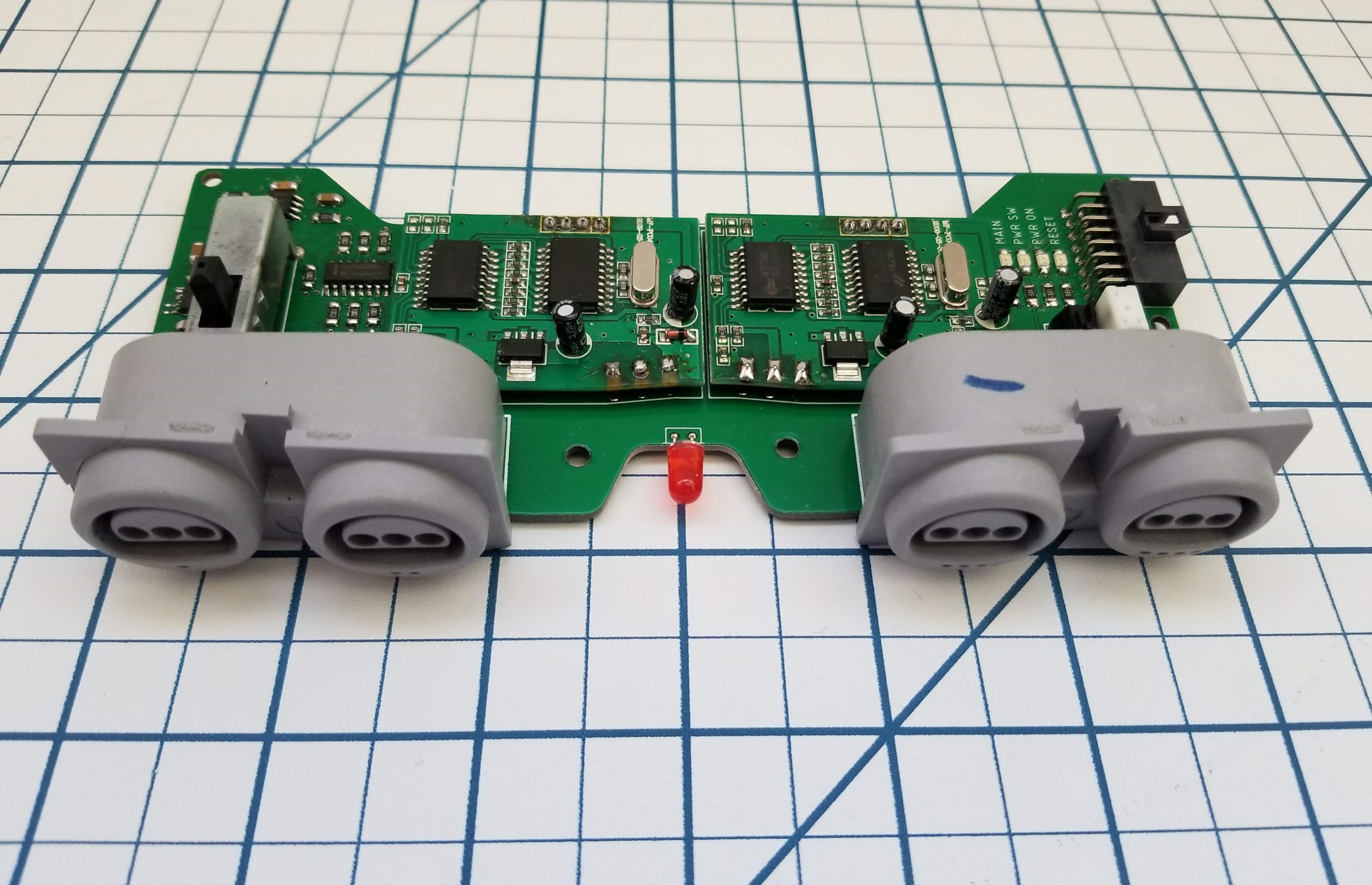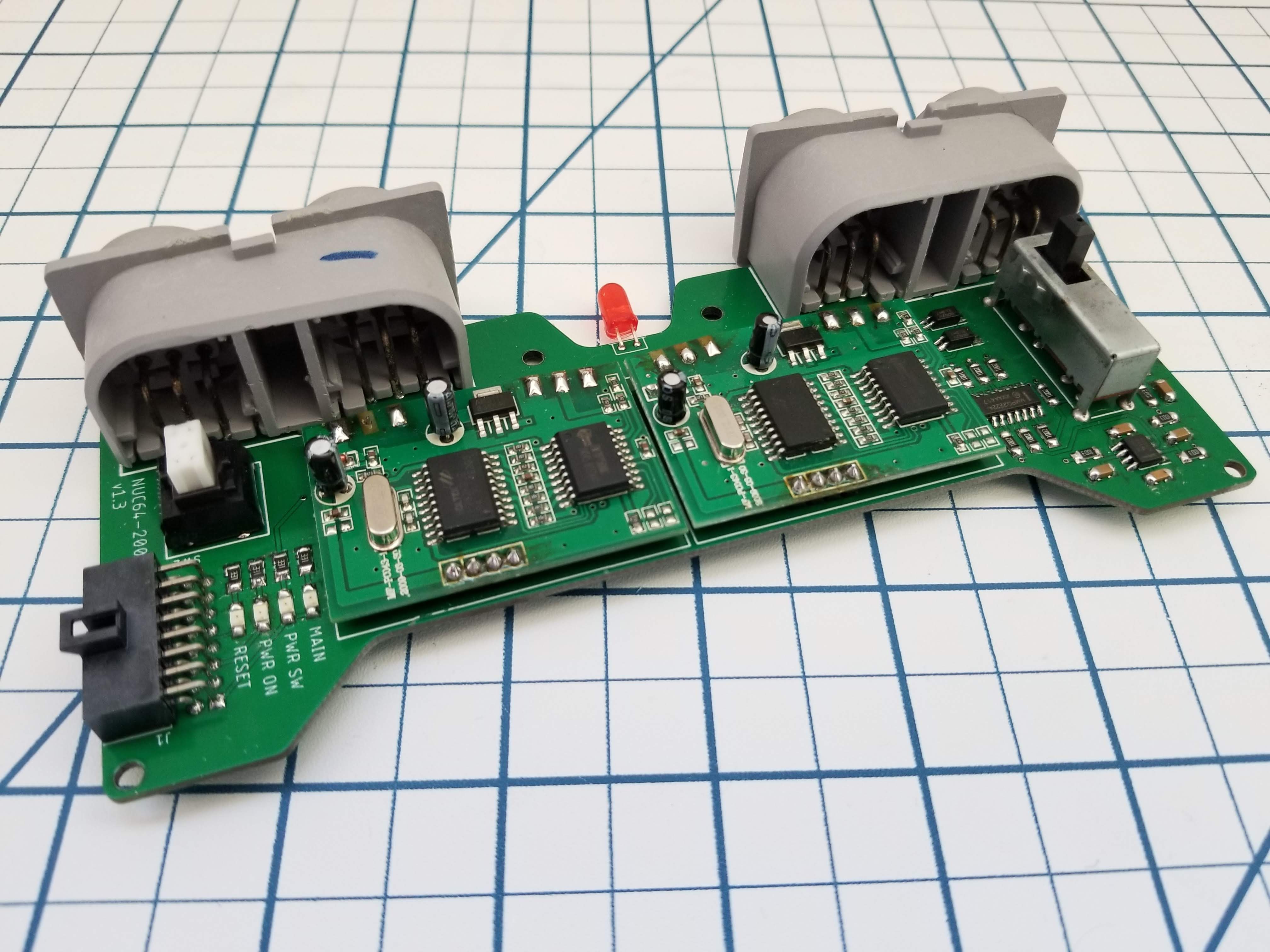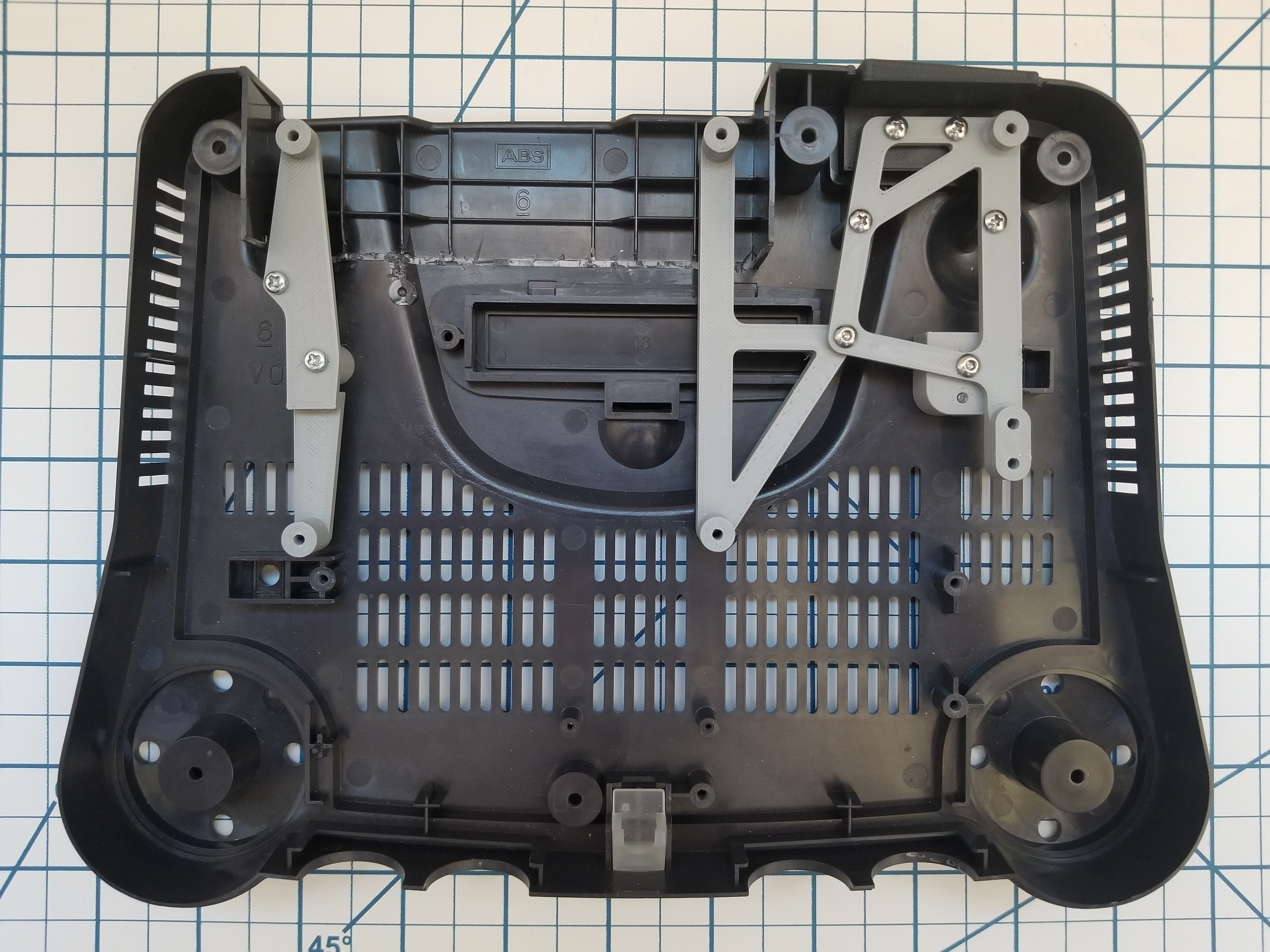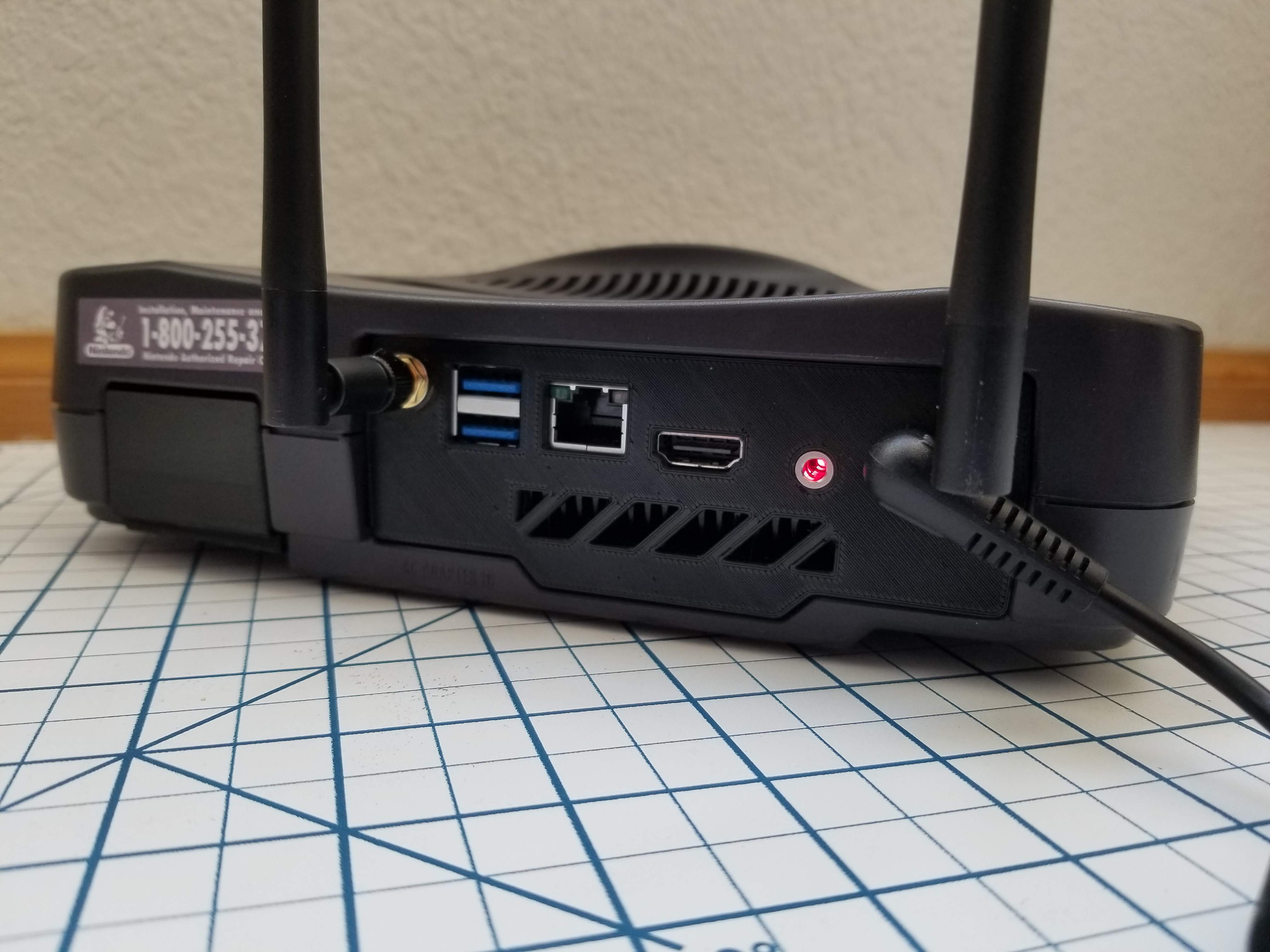A custom PCB was designed to feature two 2-port N64-to-USB adapters routed to the original controller ports. Also included are the original reset and power switches, center power LED, and a custom circuit designed to send the proper shutdown signal to the Intel NUC. The board then bundles its I/O into a Molex Nano-Fit 16-pin header to interface with the motherboard. Status LEDs for the board power, motherboard power, power switch state, and reset switch state are also included. The control board's power switch logic circuitry is powered by a +5V auxiliary power header on the NUC, while the controller adapters still receive power through the 2-port USB 2.0 header.
The power switch requires some logic conversion to be able to properly power on and shut down the PC. A simple slide switch would not suffice, as the motherboard expects a pulse and not a constant signal. Twin 555 timers configured as one-shot pulse generators provide a single pulse for each "throw" of the slide switch. The output of each timer is then fed through an OR-gate, and then buffered to keep the circuit opto-isolated from the motherboard.

One minor flaw in this design is that it's possible for the power switch's position to become out-of-sync if operated too quickly, but this is easily rectified the next time the PC shuts down as you can unplug the device and move the switch back to the correct position.


Brackets were designed to adapt the stock N64 board mounts to the Intel NUC motherboard. In addition, an M.2-to-SATA adapter board can be mounted, as a full size 2.5" SSD was too large to comfortably fit in the case. A rear cover is also inserted behind the storage adapter to cover where the original AV port used to be accessed from.


A custom rear I/O shield matches the profile of where the stock AC adapter would normally plug into. Additional holes were added to mount the wireless antennas, and a vent allows the blower-style fan under the motherboard to exhaust out the rear of the case.

 RetroModder
RetroModder
Discussions
Become a Hackaday.io Member
Create an account to leave a comment. Already have an account? Log In.